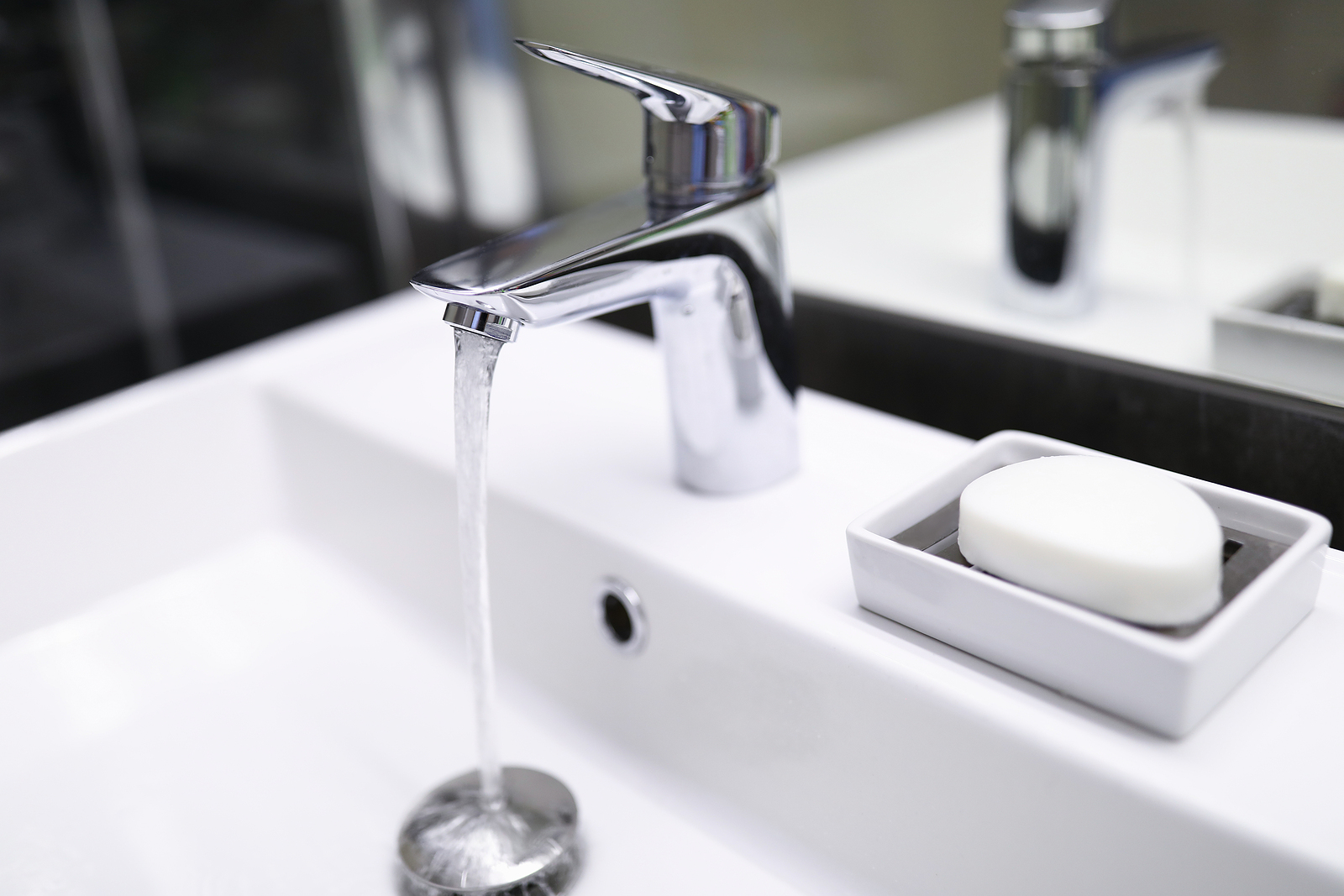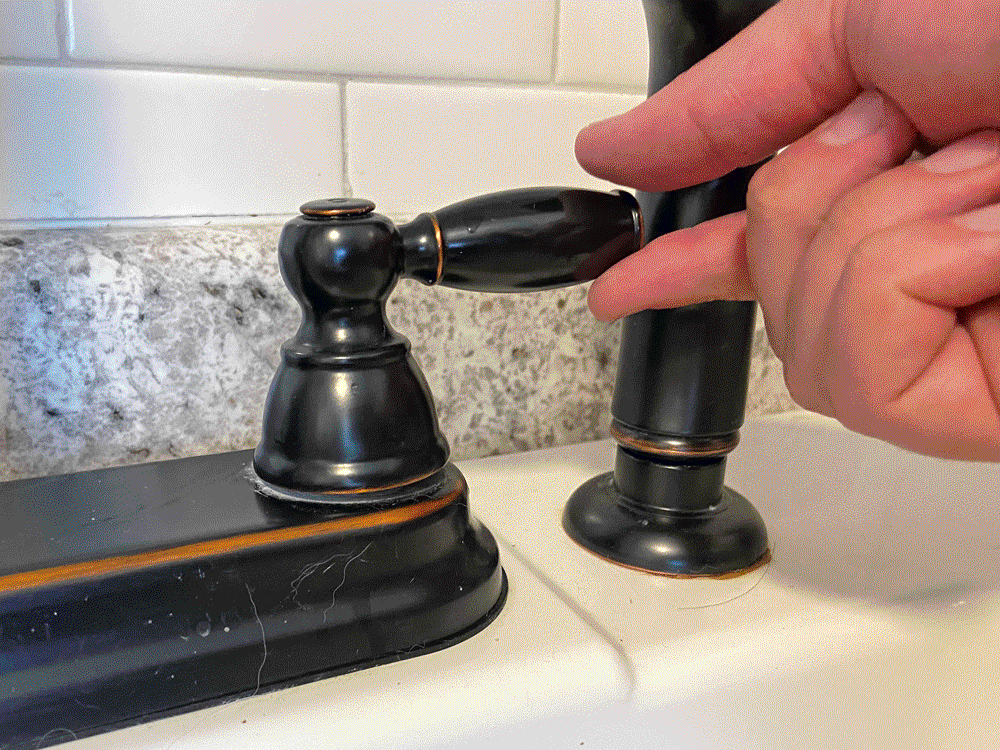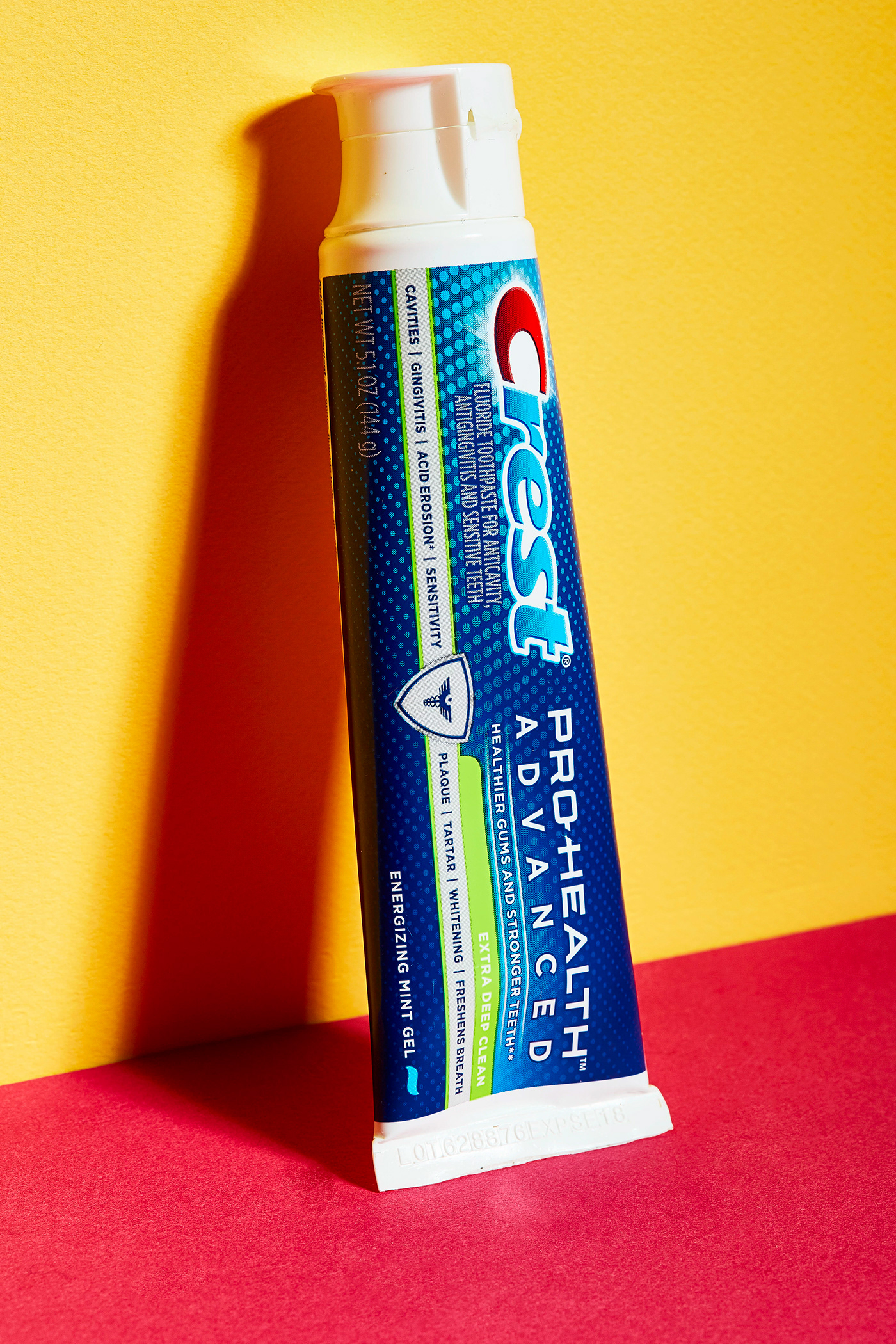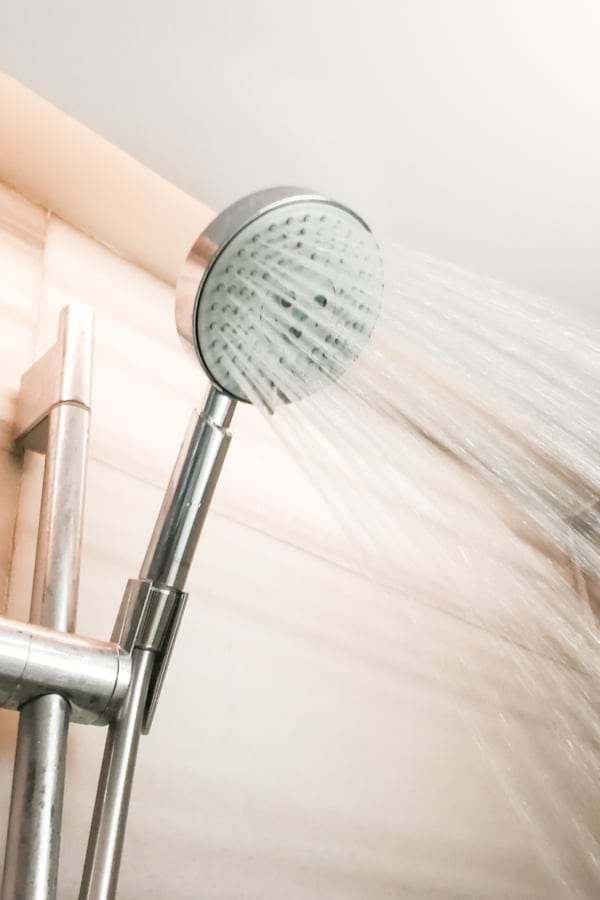One of the most common reasons for low water pressure in a bathroom sink is a clogged aerator. The aerator is a small screen located at the end of the faucet that helps to mix air with the water flow, giving a smooth and consistent stream. Over time, mineral deposits, debris, and other sediment can build up in the aerator, restricting the flow of water. This can lead to a weak stream or even a complete blockage of the water flow. To fix this issue, you can try cleaning the aerator by unscrewing it from the faucet and soaking it in a mixture of vinegar and water. If the build-up is severe, you may need to replace the aerator altogether.Clogged aerator | Low water pressure | Bathroom sink
If the aerator is not the issue, the next culprit could be a faulty faucet. Over time, the internal components of a faucet can wear out, leading to a decrease in water pressure. This can be caused by a variety of factors, such as a worn-out cartridge, a cracked valve, or a damaged O-ring. Replacing a faulty faucet can significantly improve water pressure in your bathroom sink. It's important to choose a high-quality faucet with a good flow rate to ensure a strong and steady stream of water.Faulty faucet | Low water pressure | Bathroom sink
If you notice low water pressure in your bathroom sink, it's essential to check for any leaks in the pipes. Leaking pipes can cause a decrease in water pressure, as the water is not able to flow properly through the system. This can also lead to water wastage and damage to your property if left unchecked. If you do find a leak, it's best to call a professional plumber to fix it. They will be able to identify the source of the leak and repair it to restore proper water pressure in your bathroom sink.Leaking pipes | Low water pressure | Bathroom sink
Mineral buildup is a common problem in areas with hard water. As the water passes through the pipes and fixtures, it can leave behind mineral deposits, such as calcium and magnesium, which can clog the pipes and restrict water flow. This can lead to low water pressure in your bathroom sink and other fixtures. To prevent mineral buildup, you can install a water softener or use a descaling solution regularly to remove any buildup. This will not only improve water pressure but also help to extend the lifespan of your pipes and fixtures.Mineral buildup | Low water pressure | Bathroom sink
The shut-off valve is responsible for controlling the water flow to your bathroom sink. If this valve is faulty or partially closed, it can result in low water pressure. This is a relatively easy issue to fix, as you can simply turn the valve fully open to restore proper water pressure. If the valve is damaged, it may need to be replaced to ensure proper functioning and water pressure in your bathroom sink.Faulty shut-off valve | Low water pressure | Bathroom sink
In some cases, the issue may not be with your bathroom sink at all, but with the water supply itself. If there is a problem with the main water line, it can affect the water pressure in your entire house, including your bathroom sink. You can check with your local water company to see if there are any known issues with the water supply in your area. If not, it's best to call a plumber to identify the source of the problem and make any necessary repairs.Water supply issues | Low water pressure | Bathroom sink
Over time, pipes can corrode and develop small holes or cracks, which can obstruct the flow of water and result in low water pressure. This is a common issue in older homes with outdated plumbing systems. Corroded pipes can also lead to leaks and water damage if left untreated. If you suspect that corroded pipes are the cause of low water pressure in your bathroom sink, it's best to call a plumber to inspect and replace any damaged pipes.Corroded pipes | Low water pressure | Bathroom sink
A pressure regulator is a valve that controls the water pressure coming into your home from the main water line. If this regulator is faulty or not set correctly, it can result in low water pressure in your bathroom sink and other fixtures. To fix this issue, you can either adjust the pressure regulator or replace it entirely. It's best to consult a professional plumber for this task to ensure it is done correctly.Faulty pressure regulator | Low water pressure | Bathroom sink
Another common reason for low water pressure in a bathroom sink is the presence of air in the pipes. This can happen when there is a sudden change in water pressure, such as when the main water line is shut off and turned back on. The air in the pipes can cause a blockage and restrict the flow of water. To get rid of the air in the pipes, you can run the water in your bathroom sink for a few minutes. This should help to push the air out and restore proper water pressure.Air in pipes | Low water pressure | Bathroom sink
In some cases, the issue of low water pressure in a bathroom sink can be attributed to the design of the plumbing system. If the pipes are too small or have too many bends and turns, it can cause resistance and result in low water pressure. If this is the case, you may need to consult a professional plumber to redesign the plumbing system to improve water pressure in your bathroom sink and other fixtures.Plumbing system design | Low water pressure | Bathroom sink
Additional Reasons for Low Water Pressure in Bathroom Sink

1. Clogged Pipes
 One of the most common reasons for low water pressure in a bathroom sink is due to clogged pipes. Over time, debris, hair, and other substances can build up and block the pipes, restricting the flow of water. This can lead to decreased water pressure in the sink. To prevent this issue, regular
drain cleaning
should be performed to keep the pipes free from any obstructions.
One of the most common reasons for low water pressure in a bathroom sink is due to clogged pipes. Over time, debris, hair, and other substances can build up and block the pipes, restricting the flow of water. This can lead to decreased water pressure in the sink. To prevent this issue, regular
drain cleaning
should be performed to keep the pipes free from any obstructions.
2. Faulty Faucet
 Another reason for low water pressure in a bathroom sink could be a faulty faucet. If the
faucet aerator
is clogged with mineral deposits or dirt, it can impede the flow of water and cause low water pressure. It is important to regularly clean or replace the faucet aerator to ensure proper water flow.
Another reason for low water pressure in a bathroom sink could be a faulty faucet. If the
faucet aerator
is clogged with mineral deposits or dirt, it can impede the flow of water and cause low water pressure. It is important to regularly clean or replace the faucet aerator to ensure proper water flow.
3. Old Plumbing System
 In older houses, the plumbing system may be outdated and not equipped to handle the demands of modern fixtures. This can result in low water pressure in bathroom sinks. If your house has older plumbing, it may be necessary to upgrade to a newer system to improve water pressure.
In older houses, the plumbing system may be outdated and not equipped to handle the demands of modern fixtures. This can result in low water pressure in bathroom sinks. If your house has older plumbing, it may be necessary to upgrade to a newer system to improve water pressure.
4. Water Leaks
 Water leaks can also cause low water pressure in a bathroom sink. If there is a leak in the pipes leading to the sink, it can reduce the amount of water that reaches the faucet. This can result in low water pressure and also waste a significant amount of water. It is important to regularly check for and fix any water leaks in your home.
Water leaks can also cause low water pressure in a bathroom sink. If there is a leak in the pipes leading to the sink, it can reduce the amount of water that reaches the faucet. This can result in low water pressure and also waste a significant amount of water. It is important to regularly check for and fix any water leaks in your home.
5. Water Supply Issues
/low-water-pressure-2718732-05-99eb1816e88841c593aeeaaaf330085b.jpg) Sometimes, the issue of low water pressure in a bathroom sink may not be within your control. It could be due to problems with the
municipal water supply
or your own well system. If this is the case, contacting your local water supplier or a professional plumber may be necessary to resolve the issue.
In conclusion, low water pressure in a bathroom sink can be caused by various reasons such as clogged pipes, faulty faucets, old plumbing systems, water leaks, and water supply issues. It is important to regularly maintain and check for these issues to ensure proper water flow and avoid any potential damage to your plumbing system. If the problem persists, it is best to consult a professional for further assistance.
Sometimes, the issue of low water pressure in a bathroom sink may not be within your control. It could be due to problems with the
municipal water supply
or your own well system. If this is the case, contacting your local water supplier or a professional plumber may be necessary to resolve the issue.
In conclusion, low water pressure in a bathroom sink can be caused by various reasons such as clogged pipes, faulty faucets, old plumbing systems, water leaks, and water supply issues. It is important to regularly maintain and check for these issues to ensure proper water flow and avoid any potential damage to your plumbing system. If the problem persists, it is best to consult a professional for further assistance.

:max_bytes(150000):strip_icc()/ac3-56a73c5a5f9b58b7d0e81836.jpg)








:max_bytes(150000):strip_icc()/clearing-a-blocked-faucet-aerator-2718807-07-b5a90554991f4bb69efb45a472df7f23.jpg)








:max_bytes(150000):strip_icc()/testing-water-pressure-in-your-home-2718692-04-c37ab3236d0d4b61b87079ebf9ef823e-c1e1ef0104fb44778a287bd9bb5ec140.jpeg)

:max_bytes(150000):strip_icc()/the-men-s-hand-opens-the-ball-valve-on-the-collector-1006810456-5c5fc73fc9e77c000159c4af.jpg)















































:max_bytes(150000):strip_icc()/sink-pipe-under-wash-basin-119001607-6f28aec4c66944efb7a9a38cb622ab8b.jpg)




/cdn.vox-cdn.com/uploads/chorus_image/image/65889227/sink_shutoff_valves_x.0.jpg)







:max_bytes(150000):strip_icc()/aerobed-opti-comfort-queen-air-mattress-with-headboard-93c9f99d65ee4cce88edf90b9411b1cd.jpg)

